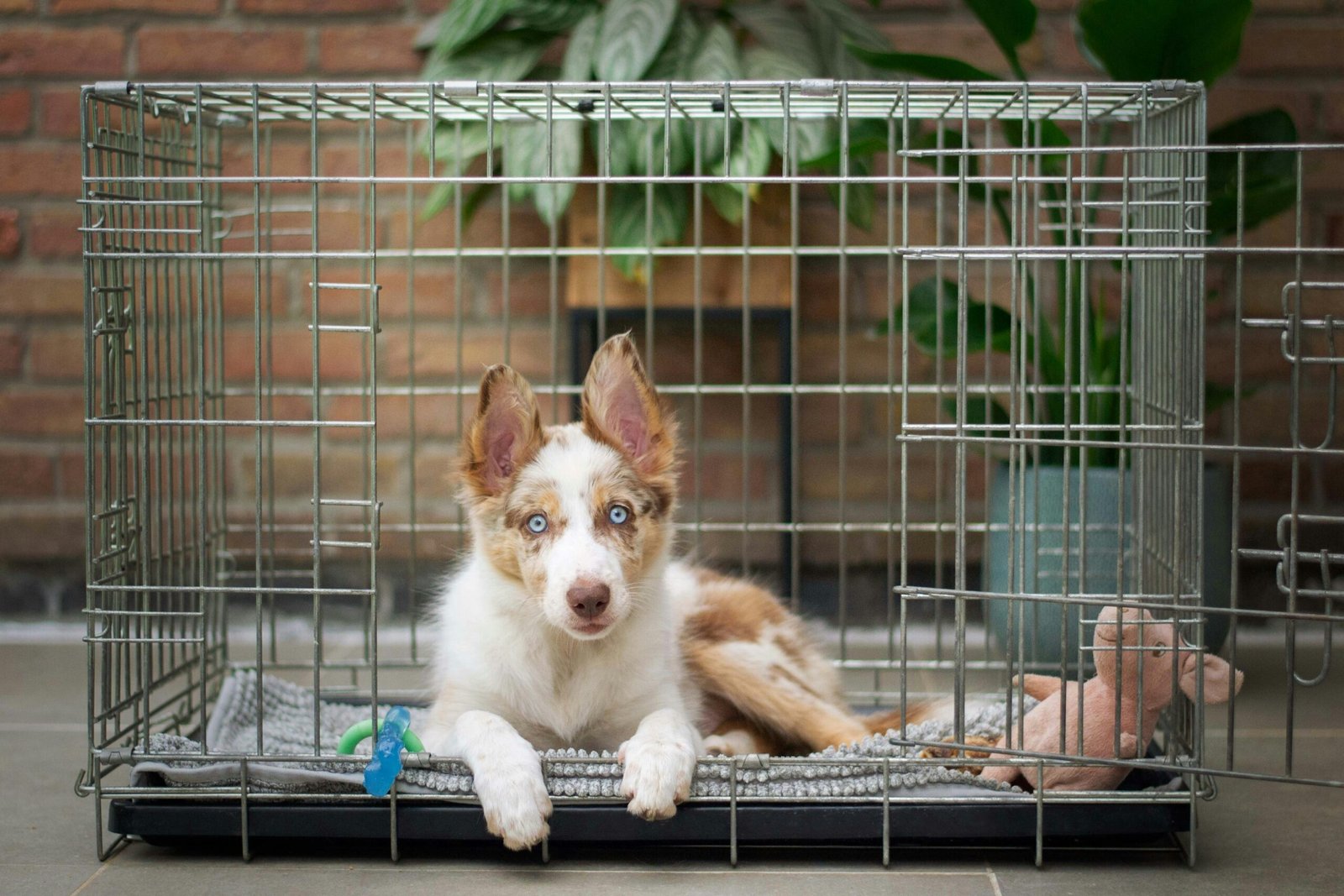
7 Simple Steps to Crate Train Your Corgi
Introduction to Crate Training
Crate training is an effective method to help your Corgi feel secure and comfortable in their new home. This technique can also aid in house training and provide a safe space for your pet during travel or when you’re not around. Follow these seven simple steps to successfully crate train your Corgi.
Step 1: Choose the Right Crate
Select a crate that is appropriately sized for your Corgi. It should be large enough for your pet to stand, turn around, and lie down comfortably. A crate that’s too big might lead to accidents, while one that’s too small can be uncomfortable.
Step 2: Introduce the Crate Gradually
Place the crate in a common area where your Corgi spends a lot of time. Encourage your pet to explore the crate by placing treats or toys inside. Leave the door open so your Corgi can enter and exit freely without feeling trapped.
Step 3: Make the Crate Comfortable
Add a soft blanket or a bed to make the crate cozy. Familiar items, like your Corgi’s favorite toy, can also help create a positive association with the crate. The goal is to make the crate a welcoming and pleasant environment.
Step 4: Use Positive Reinforcement
Reward your Corgi with treats and praise whenever they enter the crate. This positive reinforcement will help them associate the crate with good experiences. Avoid using the crate as a punishment to prevent negative associations.
Step 5: Start with Short Periods
Once your Corgi is comfortable entering the crate, close the door for short periods while you are at home. Gradually increase the duration as your pet becomes more accustomed to being inside the crate.
Step 6: Create a Crate Routine
Establish a routine by crating your Corgi at consistent times each day, such as during meals or bedtime. This predictability helps your pet understand when to expect crate time and reduces anxiety.
Step 7: Be Patient and Consistent
Crate training can take time, so be patient and consistent with your efforts. Every Corgi is different, and some may require more time to adjust than others. Maintain a calm and positive approach throughout the process.
Conclusion
By following these seven simple steps, you can effectively crate train your Corgi, ensuring they feel safe and comfortable in their new space. Remember, patience and consistency are key to successful crate training.
American Dingo animal behavior Budget Tips canine behavior Canine Care Canine Health DIY pet projects dog behavior Dog Breeds dog care Dog Care Tips dog exercise Dog Food Dog Grooming dog health Dog Measurement dog nutrition dog ownership dog potty area Dog Training Dog Wound Care Family Pets Hunting Dogs lipomas in dogs newborn puppy care obedience training outdoor pet care Pet Care Pet Care Tips Pet Health Pet Loss Pet Safety pet tips pet training Positive Reinforcement Potty Training Puppy Care puppy health Puppy Training Rabies in Dogs Temperature Monitoring Training Tips veterinary advice Veterinary Care Veterinary Tips
-
 Essential Care Guide: Pet dogs Wellness Checks Every Owner Needs
2 views
Essential Care Guide: Pet dogs Wellness Checks Every Owner Needs
2 views -
 Understanding Exercise Needs for Different Dog Breeds
2 views
Understanding Exercise Needs for Different Dog Breeds
2 views -
 2025 Mice-Proof Dog Food Storage: 3 Expert Tips to Block Rodents (+ Garage Storage Hacks)
2 views
2025 Mice-Proof Dog Food Storage: 3 Expert Tips to Block Rodents (+ Garage Storage Hacks)
2 views -
 How to Successfully Potty Train Your Dog in Singapore
1 view
How to Successfully Potty Train Your Dog in Singapore
1 view -
 How to Teach Your Puppy to Sit: A Step-by-Step Guide
1 view
How to Teach Your Puppy to Sit: A Step-by-Step Guide
1 view -
 The Ideal Age to Start Potty Training Your Dog
1 view
The Ideal Age to Start Potty Training Your Dog
1 view -
 Top 10 Famous Dogs in the World The Three Stooges of Sledding and Housebreaking Make the List
1 view
Top 10 Famous Dogs in the World The Three Stooges of Sledding and Housebreaking Make the List
1 view -
 Pitbull Allergies: 7 Vet-Approved Signs, Treatments & How to Protect Your Dog (2025 Guide)
1 view
Pitbull Allergies: 7 Vet-Approved Signs, Treatments & How to Protect Your Dog (2025 Guide)
1 view -
 Mastering the Art of Training a 2-Year-Old Dog: Tips and Tricks
1 view
Mastering the Art of Training a 2-Year-Old Dog: Tips and Tricks
1 view -
 2025 Dog Labor Guide: 4 Vet-Approved Steps for Safe Home Delivery (Emergency Protocols Inside)
1 view
2025 Dog Labor Guide: 4 Vet-Approved Steps for Safe Home Delivery (Emergency Protocols Inside)
1 view










Leave a Reply
You must be logged in to post a comment.